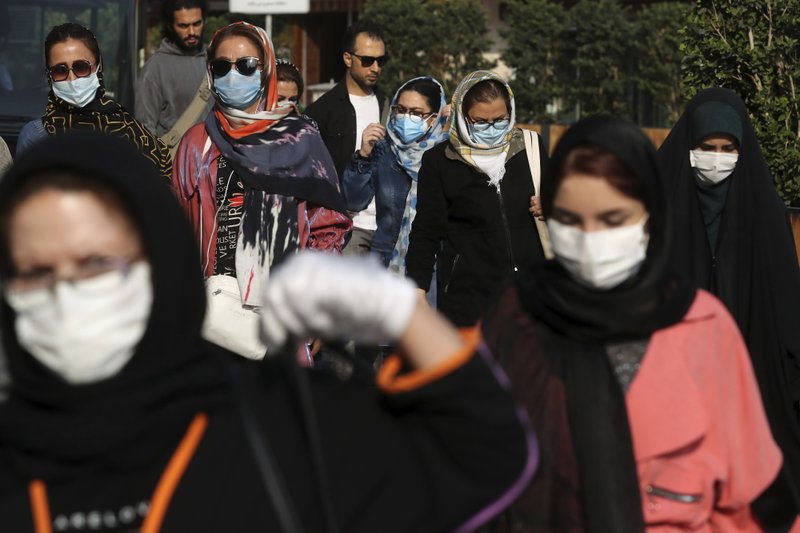Iran announced on Sunday its highest single-day death toll from the coronavirus with 251 confirmed dead, the same day local media reported two senior officials had been infected and the nation’s currency plunged to its lowest level ever.
Health Ministry spokesperson Sima Sadat Lari said the total confirmed death toll now stands at 28,544, making Iran the hardest-hit country in the region. Iran had just recently recorded its highest daily death toll four days earlier with 239 new fatalities.
A further 3,822 new cases were confirmed over the past 24 hour-period, raising recorded nationwide cases to 500,075. Nearly 4,500 patients are in critical condition.
Among those recently infected is the head of the country’s atomic energy organization, the latest senior official to test positive for the virus.
The semiofficial Tasnim news agency said Ali Akbar Salehi, who is also a vice president of Iran, had confirmed positive for the virus last week and has been in home quarantine since. The news agency reported that his health condition is currently good.
A separate report by the news agency said the country’s vice president in charge of budget and planning, Mohammad Bagher Nobakht, had also tested positive for the coronavirus.
Iran has struggled to contain the spread of the virus across this nation of 80 million people, initially beating it back only to see a spike in cases again, beginning in June. The government has largely resisted imposing wide-scale lockdowns as the economy teeters from continued U.S. economic sanctions that effectively bar Iran from selling its oil internationally.
Money exchange shops in Tehran sold the U.S. dollar at 315,000 rials on Sunday, compared to what was 32,000 rials to the dollar at the time of Iran’s 2015 nuclear deal with world powers.
Salehi is known internationally as one of the key Iranian negotiators who took part in those nuclear talks. The deal curbed Iran’s nuclear activities in exchange for sanctions relief, but President Donald Trump unilaterally withdrew the United States from the agreement in 2018 and reimposed crushing economic sanctions.
The currency plummeted further on Sunday after the Trump administration’s decision on Thursday to blacklist 18 Iranian banks that had so far escaped the bulk of re-imposed sanctions. The move subjects non-Iranian financial institutions to penalties for doing business with them, effectively cutting the banks off from the international financial system.
Meanwhile, Iran has seen several top officials contract the virus over past months, including senior Vice President Eshaq Jahangiri and Vice President Massoumeh Ebtekar. A number of Cabinet ministers have also tested positive, including Tourism Minister Ali Asghar Mounesan and the former Industry Minister Reza Rahmani. The head of an Iranian government task force on the coronavirus who had urged the public not to overreact about its spread was among the first senior officials to contract the virus in late February.
The virus first appeared in Iran at the same time the government was trying to shore up support for the country’s parliamentary elections, which saw the lowest voter turnout since the 1979 Islamic Revolution that brought its clerical leadership to power.
Also on Sunday, state TV reported that a gas explosion killed five people and injured nine in the southwestern city of Ahvaz, which is the capital of the oil-rich Khuzestan province.
The explosion ruined a two-story residential building and damaged nearby buildings in a local market. Rescue teams are searching for other possible victims as authorities probe the cause of the gas explosion.
(AP)











